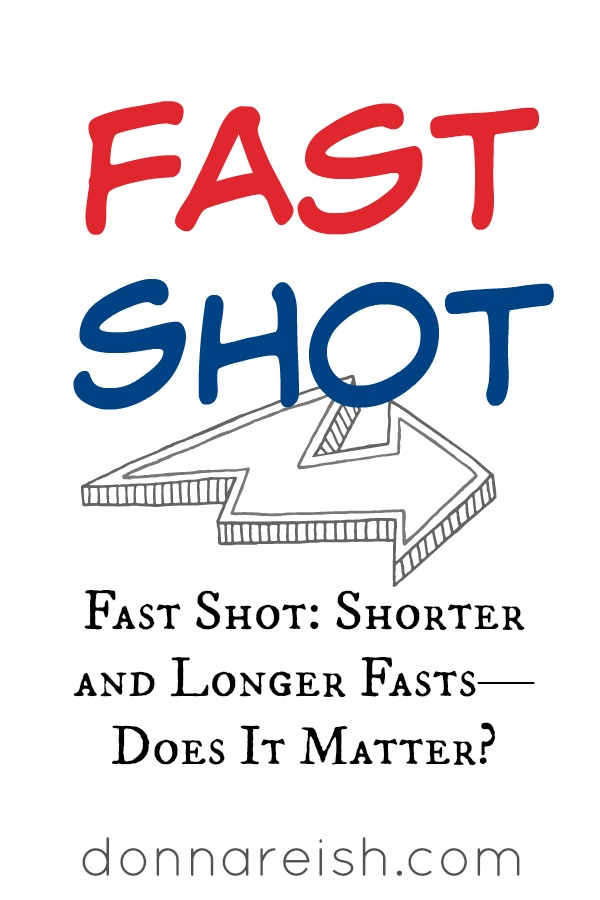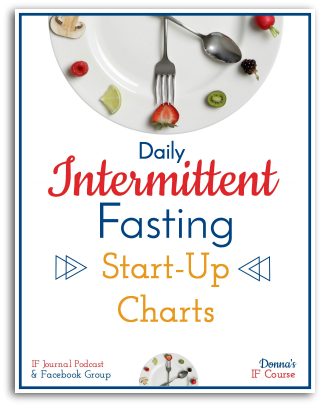
In this fast shot, Donna Reish, blogger, author of 100 curriculum books, Intermittent Fasting teacher, and seeker of health, teaches the benefits and downfalls of fasting for shorter periods times vs longer periods of times each day. She begins with understanding the four ways we lose inches and fat with fasting and then discusses other health benefits that can be affected by fast length. She then describes the process of shorter fasting, that is 16-18 hour fasting hours. She discussed how this allows for two meals or more, how some people have self control problems with that long of an eating window/that many eating opportunites, how effective this approach is for clean/whole foods eaters, the this fasting length’s potential effect on Appetite Control. Then Donna discussed the longer fasting times,, such as 19 to 23 hours, including the potential benefit of one meal a day, the length of time it may take to burn through stored glycogen, and how the body gets used to longer fasts/trains grehlin. She brings it all together in summary between the two time conundrums. intermittentfastingwebinar.com
A. First Understand the Mechanisms of Fasting and Weight Loss/Inch Loss With Fasting
- 1. Four ways we lose inches and fat with fasting
- a. No insulin/no food=fat burning—putting body in best position to burn its stored energy for fuel
- b. Balancing hormones—grehlin, leptin, Human Growth Hormone, etc., for most appetite control possible
- c. Reducing caloric intake over time resulting in long term weight loss
- d. Body recompositioning as the body burns its own body fat—inch loss often happens before fat loss.
- 2. Other benefits of fasting outside of weight loss and inch loss and appetite correction, etc., happen with shorter and longer eating periods
- a. Research showing that even 12 hours fasted is helping to reduce breast cancer
- b. Research showing it takes 18 to 36 hours of completely clean fast to cause autophagy
- c. These benefits come into play when making fasting length and “clean-ness”
- a. Research showing that even 12 hours fasted is helping to reduce breast cancer
B. Shorter fasts (16-18 hours)
- 1. Usually allow for two meals or more
- 2. Some people eat too much in that longer eating window without other eating protocols in place (calorie reduction)
- 3. Depending on what you ate yesterday and the day before, it might not be long enough for body to go into fat burning mode (using body fat for fuel)
- 4. Appetite might not be as controlled if you graze during the eating window or eat too many processed foods (real foods help with AC as does protein and fiber)
C. Longer fasts (19-24 hours)
- 1. May result in truly one meal—this can cause a better caloric level (calorie reduction)
- 2. Long fast gives lots of opportunity to burn through circulating glucose and stored glycogen so this will likely increase body fat burning (using stored body fat for fuel)
- 3. Can work both ways for AC
- a. Backfire—I did so great fasting, so I can eat as much as I want (not too likely with AC and not usually at all for real foods)
- b. Body can get used to no food for that period of time and if you truly eat one snack and one meal without grazing or just one meal, AC will probably be superb
D. So Shorter or Longer Fasts?
- 1. Base in part on goals (weight, size, health, brain, autophagy, etc)
- 2. Base in large part on sustainability and adherence—what can you truly do without giving up?
- 3. Base in part on what you eat—people with healthier diets and fewer processed foods can usually do 2MAD and lose or maintain; if you honestly want a restaurant style meal and dessert every day, longer fasts will be needed
- 4. Base in part on your success so far and where you are in your weight loss journey
- 5. Can alternate!

















